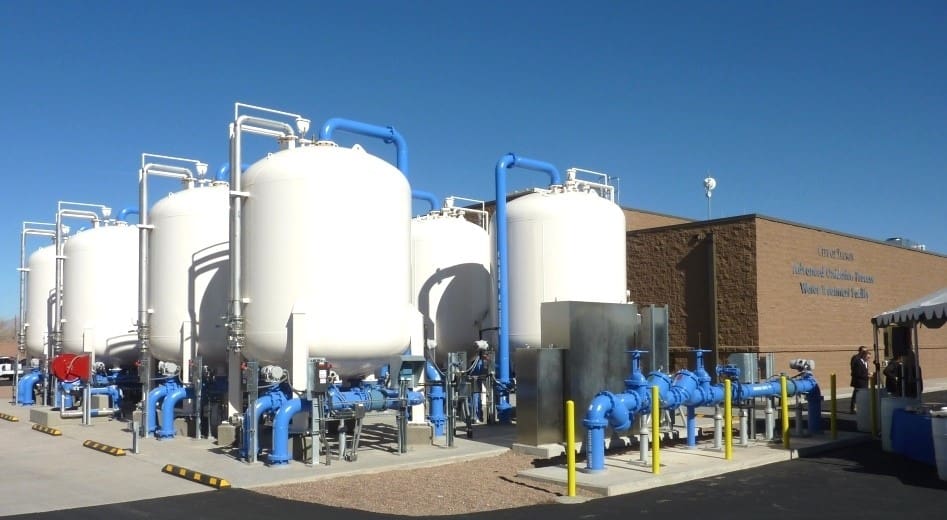Ingenious PFAS Therapy Solutions for Safer Water
The raising prevalence of PFAS contamination in water supplies requires an essential evaluation of ingenious therapy remedies. In addition, emerging bioremediation techniques provide an even more lasting approach to tackling PFAS difficulties. pfas management.
Introduction of PFAS Contamination
PFAS contamination has actually become a significant environmental and public wellness issue. Per- and polyfluoroalkyl compounds (PFAS) are a group of artificial chemicals known for their persistence in the setting and body, leading them to be frequently referred to as "forever chemicals." These substances have actually been widely made use of in various markets, consisting of firefighting foams, water-repellent materials, and food packaging, mostly due to their water- and grease-resistant homes.
The prevalent use of PFAS has actually resulted in their discovery in dirt, water materials, and even in the blood of human beings and pets. Research studies have linked PFAS exposure to countless health and wellness problems, including developmental impacts in babies, body immune system disorder, and numerous forms of cancer. In addition, the environmental perseverance of these substances complicates their destruction and elimination, elevating issues concerning lasting ecological effects.
Regulatory bodies are increasingly executing rigorous standards to keep track of and lower PFAS degrees in drinking water and other environmental tools. As awareness of PFAS contamination expands, it has become essential for areas and markets to look for efficient therapy options to alleviate direct exposure and secure public health.
Advanced Filtration Technologies
As the necessity to deal with PFAS contamination magnifies, progressed filtration modern technologies have become a critical part in the removal efforts focused on removing these consistent chemicals from water sources. These modern technologies leverage sophisticated systems to properly target and record PFAS compounds, which are notoriously immune to conventional therapy methods.
Among the most appealing strategies is making use of granular turned on carbon (GAC), which adsorbs PFAS molecules because of its high surface area and permeable structure. This method has been extensively carried out in both metropolitan and industrial setups, showing considerable reductions in PFAS concentrations. Furthermore, ion exchange resins have actually gained grip, particularly created to precisely bind PFAS ions from water, hence promoting their elimination.
Membrane layer purification modern technologies, such as reverse osmosis and nanofiltration, likewise reveal efficiency in PFAS removal by literally dividing contaminants from water - pfas management. These systems can attain high degrees of pureness, making them ideal for drinking water applications
Chemical Therapy Advancements
Countless chemical treatment innovations are being explored to effectively resolve PFAS contamination in water products. One encouraging technique involves using innovative oxidation processes (AOPs), which make use of powerful oxidants such as ozone, hydrogen peroxide, or chlorine dioxide incorporated with UV light to damage down PFAS substances into much less harmful materials. This method has shown efficacy in research laboratory settings, showing prospective for scalability in real-world read here applications.
One more ingenious approach is the development of ion-exchange materials especially developed to target PFAS. These materials can precisely adsorb PFAS compounds from water, permitting their removal during therapy processes. Current improvements have actually improved the performance and capacity of these resins, making them a positive alternative for water treatment centers.
Furthermore, researchers are exploring using chemical representatives like persulfate and ferrous ions to boost the degradation of PFAS in infected water. These representatives can induce chemical reactions that facilitate the break down of consistent PFAS compounds.
Emerging Bioremediation Strategies
Recent developments in chemical therapy technologies have led the way for exploring bioremediation strategies as a viable choice for addressing PFAS contamination. Bioremediation harnesses the all-natural metabolic processes of microbes to weaken or transform toxins, making it an appealing strategy for tackling consistent contaminants like PFAS.
Emerging methods in bioremediation consist of making use of genetically engineered bacteria that can particularly target and break down PFAS substances. These microbial stress are being created for their boosted deterioration capabilities, enhancing the effectiveness of the removal process. Furthermore, researchers are investigating the possibility of plant-assisted bioremediation, where certain plant varieties may uptake and sequester PFAS from polluted dirt and water.
Another promising technique is the application of bioaugmentation, which entails introducing advantageous microorganisms into polluted atmospheres to improve the deterioration of PFAS. This method can help with much faster removal timelines and enhance total effectiveness.

Regulative Frameworks and Standards
A thorough regulatory framework is crucial for effectively taking care of PFAS contamination and making certain public health and wellness security. The raising recognition of per- and polyfluoroalkyl substances (PFAS) as environmental contaminants has actually motivated numerous federal and state firms to establish criteria that govern their existence in water materials. The U.S. Epa (EPA) has actually developed health and wellness advisories and is functioning toward establishing enforceable limits for PFAS in drinking water.
State-level regulations differ considerably, with some states taking on stricter standards than those proposed by the EPA. These policies usually consist of maximum pollutant degrees (MCLs) for particular PFAS substances, monitoring requirements, and reporting responsibilities for water utilities. Additionally, emerging frameworks concentrate on the remediation of polluted websites, emphasizing the need for reliable treatment modern technologies.

Conclusion
Finally, the advancement and execution of innovative PFAS treatment services are crucial for resolving the pervasive problem of water contamination. Advanced filtering innovations, chemical therapies, and arising bioremediation methods collectively provide a diverse strategy to efficiently lower and break down PFAS degrees. As regulatory structures remain to progress, incorporating these modern technologies will certainly be crucial to secure public wellness and restore the integrity of contaminated water sources, ultimately adding to look at these guys a cleaner and more secure setting.